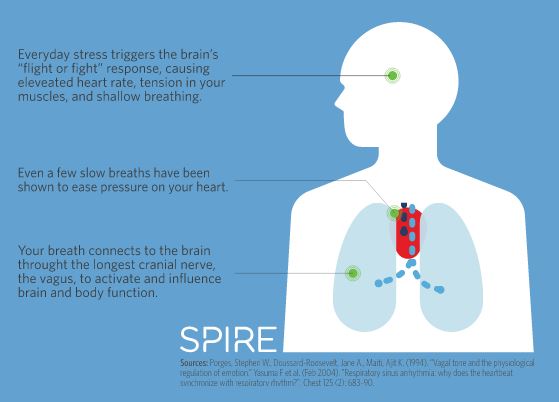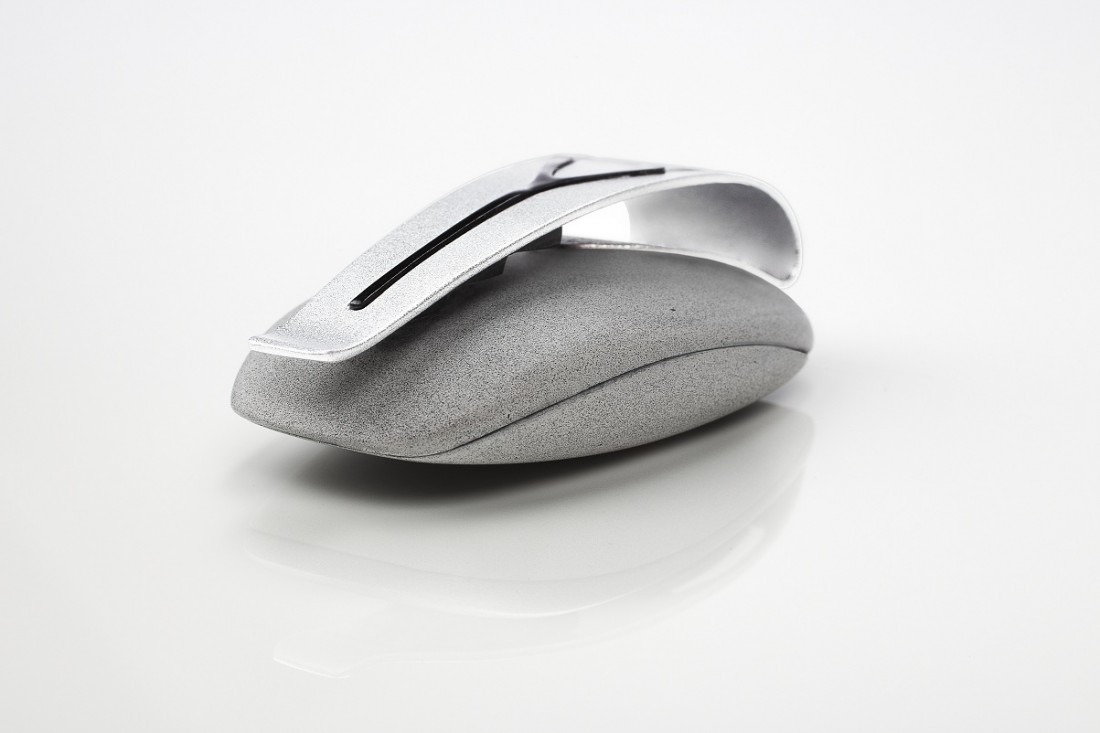

Activity trackers have become commonplace in today’s tech-obsessed society. Seeing someone wearing a smartwatch, Fitbit, Jawbone, or Nike+ Fuelband is not that unusual to us anymore. And while these devices do provide a lot of useful information, they are mostly limited to providing the user with nothing more than data. It’s up to the user to interpret this data and act accordingly depending on their goals. Spire aims to change all of that.
Compared to other activity trackers, Spire is like having a sixth sense that tracks your state of mind and recommends breathing activities for lowering your stress levels, calming your nerves, and focusing on your tasks. By measuring your breathing patterns instead of your heart rate, Spire is able to determine exactly what your state of mind is and what you can do to improve upon it or keep it going throughout your day.
While a person’s heart rate is an important source of information about their state of mind, Spire focuses on breathing patterns for several reasons:
- Respiration is an information-dense data stream: it has many components to it such as rate, depth, inhalation-to-exhalation ratio (IER), durations of inhalation, retain, exhalation, and hold, consistency, smoothness, transition smoothness, and so on.
- We all know how to take a deep breath – and have felt the effects. This makes it simple and enjoyable to do.
- Better breathing is easy to apply in our lives. It’s useful all the time and can be done while you live your life. Feedback about our breathing can strengthen our innate awareness of our own breath to help us become more self-aware and effective at work and in life.
Simply put, your breath reflects your state of mind and your state of mind is influenced by how you breathe.

Spire works by monitoring your breathing, not your heart rate.
According to Spire, “the average person is physically active only about 14% of the day.” This means that conventional activity trackers are ignoring the other 86% of your day. This is obviously a huge chunk of time that should not only be tracked, but one that can drastically change a person’s life if responded to accordingly.
Spire does not sense the chemical makeup up your breath. Instead, by clipping the stone-shaped device to your pants, shorts, or bra, Spire uses a suite of sensors and algorithms that sense body position, activity, and respiration patterns. This sensor data is then sent to your phone, which will notify you when it’s time to do something about your breathing.
Based on the science of psychophysiology that studies how the brain and body interact, Spire was developed by two Stanford University Ph.D graduates in conjunction with a cross-disciplinary team of scientists, engineers, designers, and communicators. Over four years of research went into the development of Spire and several world-class advisors and partner institutions have decided to back the project. By having Stanford University, UC San Francisco, the Mayo Clinic, and other institutions provide funding and advisement, the science and technology behind Spire has been carefully thought out.

Over four years of research went into the design of Spire.
The entire premise of Spire is based on the research of Dr. Stephen Porges, the originator of the polyvagal theory which describes how our three evolutionary layers (mammalian, evolved mammalian, and reptilian/amphibian) interact with our nervous system by using the longest cranial nerve, the vagus. According to Dr. Porges’ research, because the vagus nerve is the longest cranial nerve and is responsible for regulating heart rate, speech, gut, cortisol and adrenaline, conscious breathing will control these factors.
As wearable technology becomes more mainstream, Spire seems primed to influence how future devices will improve our lives. And while Spire claims to help users gain clarity of mind, balance, and focus; its most appealing feature is that it doesn’t do any of these things for you. Instead, it helps create the conditions for you to achieve what you want most out of life – and that is something that all technology should focus on.
If you’ve ever really observed your breath – really given it the attention it deserves – you will be amazed. It is so exquisitely tied to the mind. Breathing is the definition of life! It is the subject of soulful poetry and cutting-edge science.
– Neema Moraveji, Co-Founder of Spire and Director of the Stanford Calming Technology Lab

